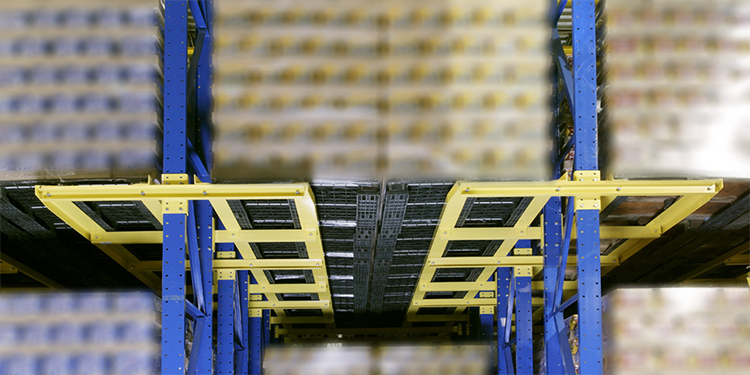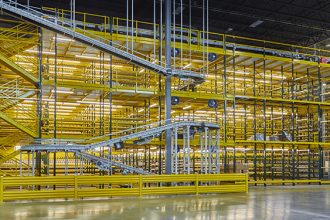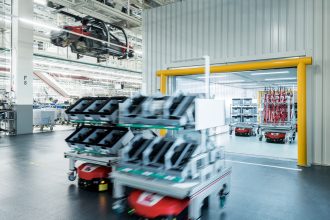Best Practices For Double-Wide Bay Drive-In, Drive-Thru Pallet Rack Safety

Delivering high-density storage, dual-bay drive-in and drive-thru storage racking is used to hold multiple pallets of the same product type. These systems — engineered with double-width bay openings that enable two pallets to be loaded simultaneously — create even more space savings by eliminating the aisles required by selective rack for forklift travel and access. A drive-in dual-bay system allows drivers to load and retrieve two pallets from the same entry point at which they were loaded for last-in/first-out (LIFO) access. With a dual-bay drive-thru system, two pallets are loaded at the same time on one side, then unloaded on the other for first-in/first-out (FIFO) workflow; this ensures that the oldest material is picked first. Regardless of the type of dual-bay system deployed in an operation, there are several best safety practices recommended by the members of RMI to ensure the integrity of the structure and minimize the risk to personnel working in and around it.
- Only use the pallet type and size for which the dual-bay racking was designed. A pallet that is too narrow may fall through the support rail structures; a pallet that is too wide will impact the uprights, causing damage to the columns or to the pallet. To ensure that the correct pallet dimensions and types are always used, loads that are received on incompatible pallets should be repalletized.
- If a facility wishes to use the same dual-bay drive-in or drive-thru methodology to store multiple pallet dimensions, inform the rack manufacturer or rack design engineer up front. It is possible to design a single system that can accommodate different pallet sizes (these are designed for the smallest pallet dimensions to be stored), or it may be more cost-effective to construct separate systems — one per pallet type.
- Inspect pallets for damage prior to loading into the rack. Broken or missing bottom boards impair the integrity of the pallet, reducing its ability to safely hold its load and increasing the likelihood of failure.
- Always load dual-bay structures from the back to the front. This eliminates the need to drive underneath loads stored on levels above, which increases the risk of the forklift impacting the load.
- Allow only the forklifts whose maximum mast reach height has been verified as fitting within the dual-bay drive-in or drive-thru rack to load and unload the system. This racking is engineered specifically to accommodate specific vehicles with appropriate clearances between columns, under rails, and between baseplates.
- Institute a continuous training program for forklift operators on proper loading and unloading of dual-bay drive-in and drive-thru racking.
- Implement regular, scheduled inspections of dual-bay drive-in and drive-thru racking to identify damage to components, such as bent columns or missing anchor bolts. Additionally, require personnel to immediately report any rack damage they observe. Damaged rack should be promptly isolated and taken out of service until the system can be inspected by a qualified, professional rack engineer to assess the stability and integrity of the structure.
- Do not reconfigure dual-bay drive-in or drive-thru rack without first consulting the load application and rack configurations (LARC) drawings. If a desired change is not shown on the drawing, consult the original rack manufacturer or a qualified, professional rack engineer to confirm the safety of the proposed reconfiguration prior to making any modifications.
Looking for more rack safety best practices and guidelines? Watch RMI’s recent webinar, “Rack Safety 101.”


